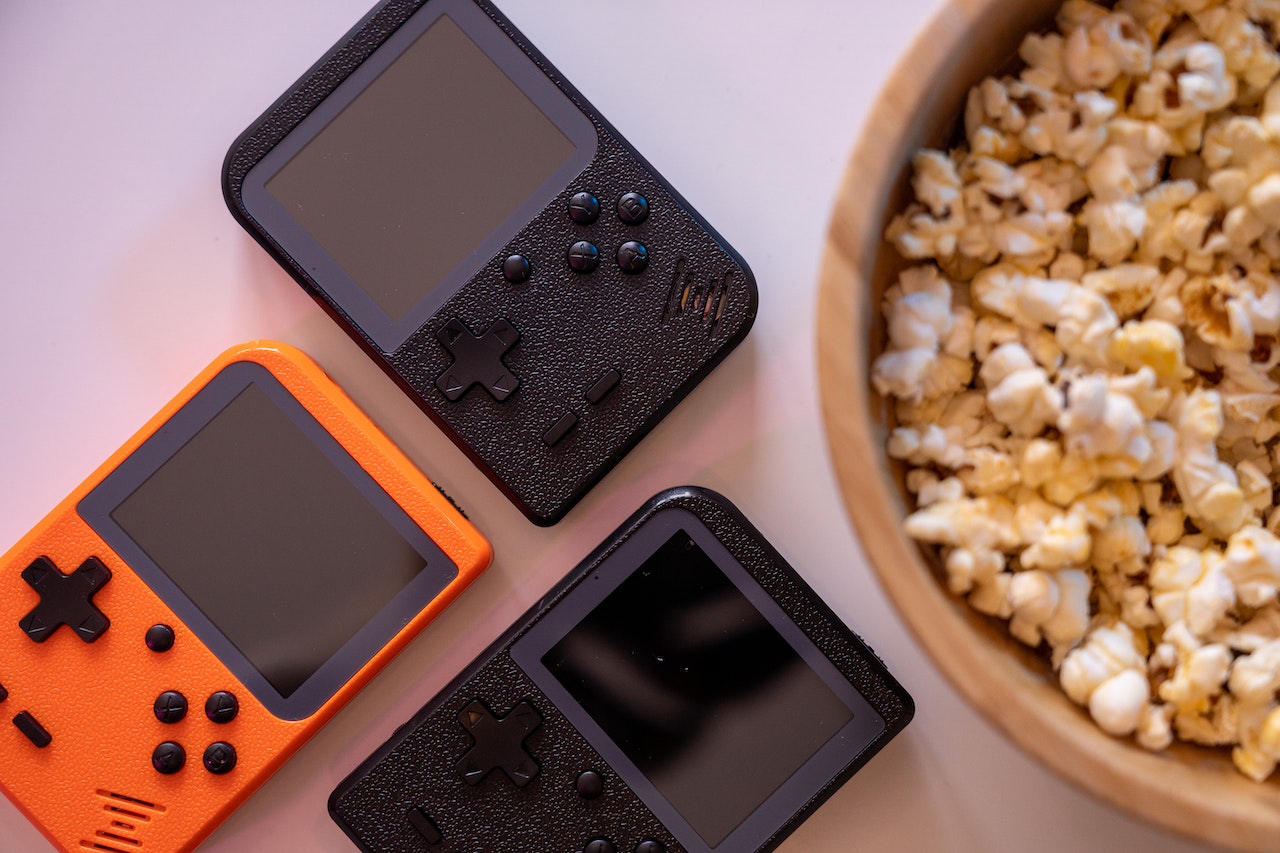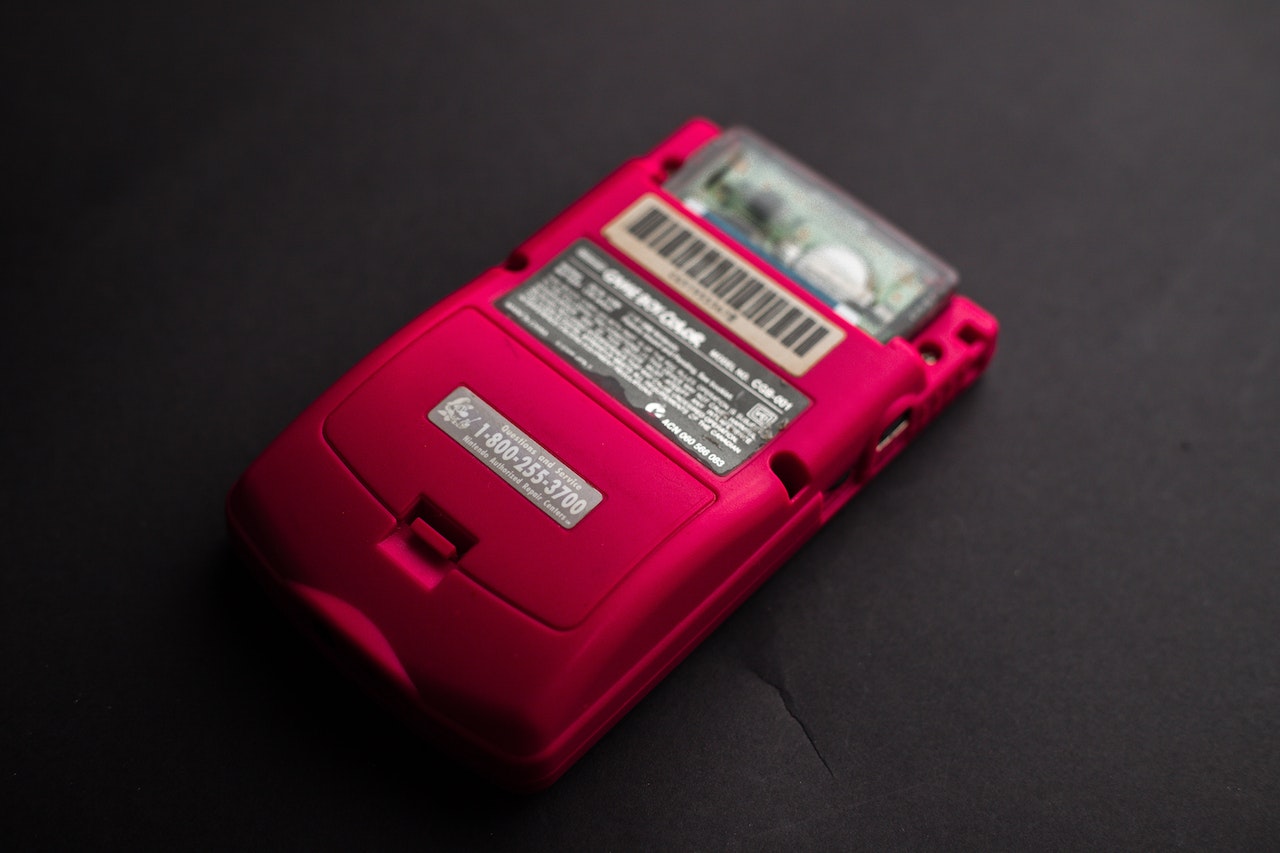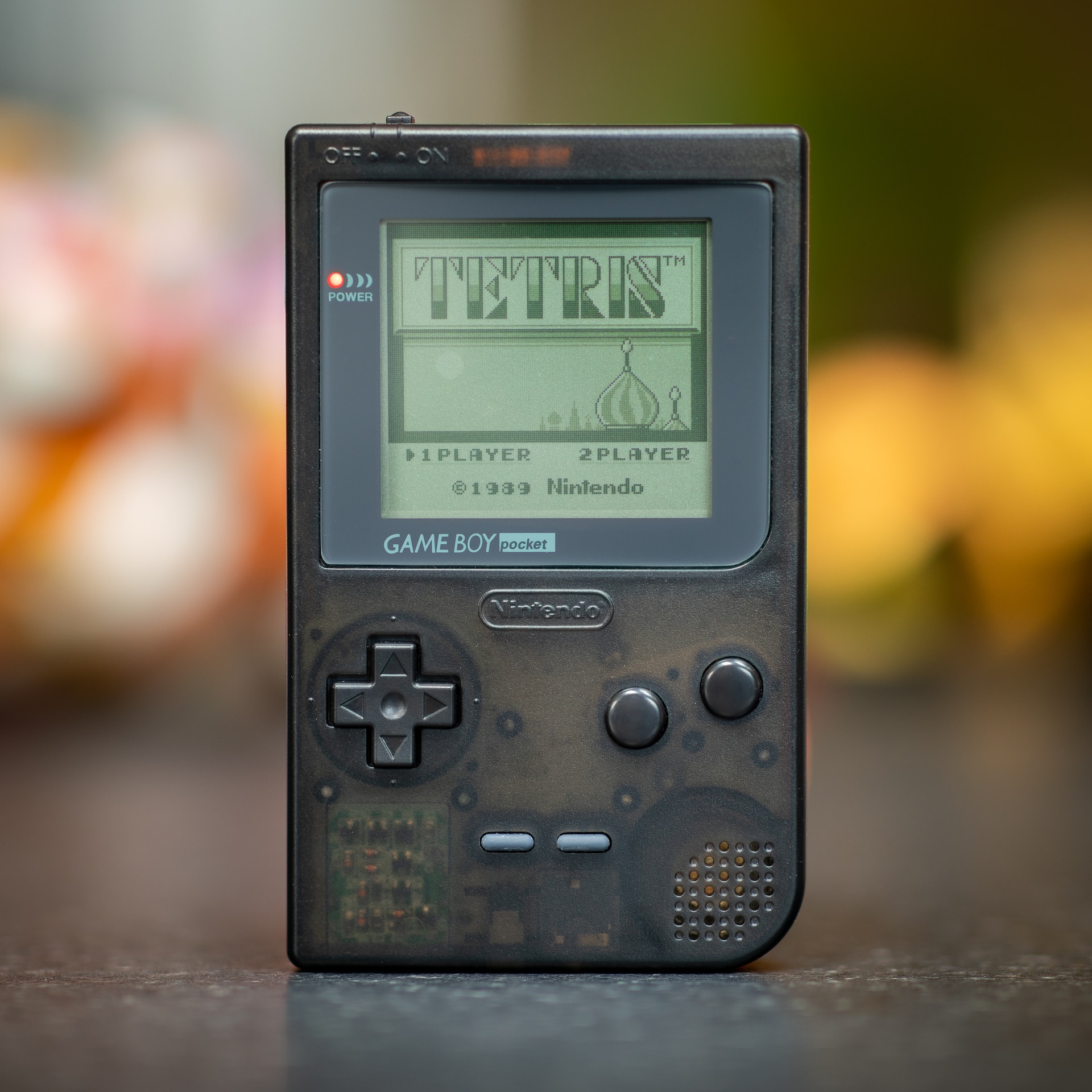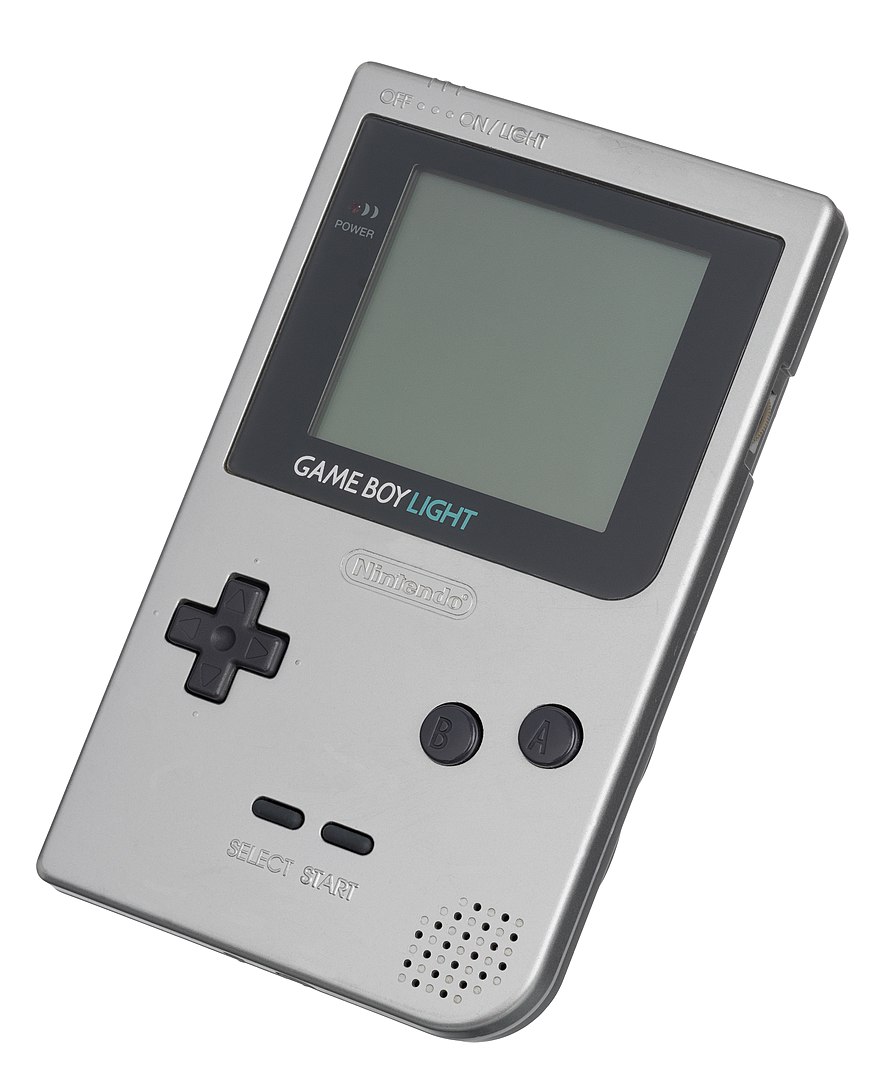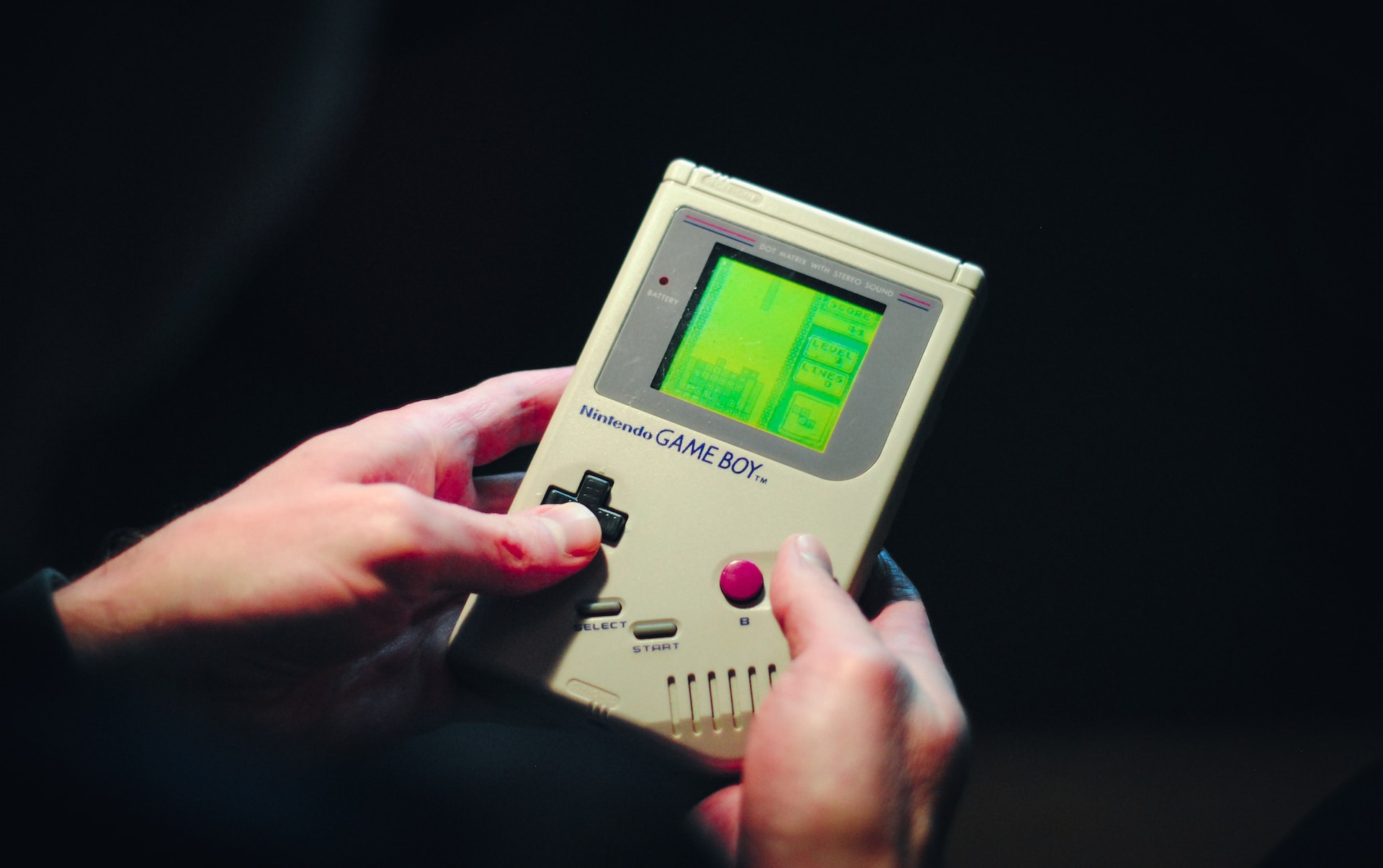One name stands out as a true legend in the ever-evolving video gaming landscape: the Game Boy. This handheld gaming console, masterminded by Gunpei Yokoi of Nintendo Japan, holds the distinguished title of being the longest-running video game system in history. [1] Making its debut in the United States in 1991, it arrived bundled with the iconic game Tetris, captivating gamers from day one. With its enduring popularity and continuous technological and design enhancements, the Game Boy reigned as the undisputed champion of handheld gaming until its retirement in 2008. Join us on a journey through the remarkable history of this enduring gaming phenomenon.
Game Boy’s History
The inception of the Game Boy can be traced back to the brilliant mind of Nintendo’s chief engineer, Gunpei Yokoi, and the innovative Nintendo R&D1 team. Building on the momentum of the Nintendo Entertainment System’s success, Yokoi presented a bold idea to Nintendo’s president, Hiroshi Yamauchi: the creation of a handheld system with interchangeable game cartridges.
Originally dubbed “Dot Matrix Game” due to its revolutionary dot-matrix display, a departure from the segmented LCDs of the earlier Game & Watch series, the Game Boy marked a significant shift in gaming technology. The “DMG” initials found their place in the final product’s model number, “DMG-01.” Leading the charge in developing this groundbreaking console were Satoru Okada and Gunpei Yokoi, whose collaboration occasionally led to disagreements. Yokoi’s vision for the Game Boy was clear: it should be compact, lightweight, durable, and host a rich library of games. The console even struggled to gain internal approval at Nintendo initially, earning the unflattering nickname “DameGame” (where “dame” means “hopeless” or “useless”) among Nintendo employees.
The Game Boy made its debut as a prototype in 1987 and was subsequently showcased at various industry trade shows. One notable design element carried over from its predecessor – the Game & Watch, was the revolutionary 8-way directional control pad, affectionately known as the “D-pad.” Yokoi and his R&D1 team recognized that traditional joysticks would compromise the handheld’s portability, leading to the creation of the D-pad.
Nintendo’s philosophy emphasized that a gaming system’s success hinged on the quality of its games. With this principle in mind, Gunpei Yokoi and Satoru Okada embarked on the development of “Super Mario Land,” a portable adaptation of the beloved Super Mario Bros. game, aiming for it to be the Game Boy’s flagship title. However, Henk Rogers brought Tetris, a Soviet Union-made game, to Nintendo of America’s attention. Despite its simple graphics and lack of a well-known brand, Nintendo president – Minoru Arakawa deemed Tetris a perfect fit for a handheld platform. Consequently, Tetris was bundled with the Game Boy upon its release, becoming a worldwide phenomenon.
Hardware Features of the Game Boy
The Game Boy boasts a distinctive set of hardware features contributing to its enduring popularity. At the core of its design are four operation buttons labeled “A,” “B,” “SELECT,” and “START,” complemented by a responsive directional pad (d-pad) for precise in-game control. Users can find a volume control dial on the device’s right side, while a similar dial on the left side allows for contrast adjustment, ensuring optimal visual clarity. At the top of the Game Boy, you’ll find a sliding on-off switch, thoughtfully equipped with a physical lockout mechanism to prevent users from inserting or removing a cartridge while the unit is powered on. To maintain the device’s longevity, Nintendo recommends leaving a cartridge in the slot to safeguard against dust and debris ingress.
The Game Boy offers optional input and output connectors to enhance its versatility. On the left side, there’s an external 3.5 mm × 1.35 mm DC power supply jack, permitting the use of an external rechargeable battery pack or AC adapter (available separately) as an alternative to the standard four AA batteries. The Game Boy requires a 6 V DC power source, delivering at least 150 mA for optimal performance. Additionally, on the bottom side of the unit, you’ll discover a 3.5 mm stereo headphone jack, enabling users to enjoy audio through bundled headphones or external speakers. [2]
On the right-hand side of the device, there’s a port that facilitates connectivity with another Game Boy system via a link cable, provided both users are engaging in games that support this feature. Typically, this entails using copies of the same game, although exceptions exist, such as the Pokémon series, which allows for intergenerational connections. The same port also serves as the gateway for attaching a Game Boy Printer, a versatile accessory. Initially designed for head-to-head two-player games like Tetris, this link cable technology later found an innovative application in the Pokémon series, elevating communication and networking within the games.
Revisions Of The Game Boy
Play It Loud!
In a pivotal moment for handheld gaming history, Nintendo introduced the “Play It Loud!” campaign on March 20, 1995, marking a vibrant departure from the traditional Game Boy aesthetic. Known as the “Game Boy Bros” in Japan, this innovative initiative saw Nintendo releasing a series of Game Boy models featuring colorful cases. These new iterations retained the same specifications as the original Game Boy, including its iconic monochromatic screen. The introduction of these boldly hued Game Boy models set a precedent that would resonate through subsequent Nintendo handhelds. From that point forward, virtually every Nintendo handheld came in a variety of colors to cater to diverse gamer preferences.
The “Play It Loud!” collection featured a broad spectrum of eye-catching hues, including red, green, black, yellow, white, blue, and even a translucent variant occasionally known as “X-Ray” in the UK. Among these options, yellow, red, clear, and black were the most prevalent, while green was relatively scarce. Blue and white, however, stood out as the rarest variants. Blue was exclusively released in Europe and Japan, while white was primarily available in Japan, with a limited release at select UK Toys R Us stores as an exclusive edition. Adding to the allure of this collection, a rare and coveted Manchester United Game Boy, adorned with the team’s logos, emerged alongside the “Play It Loud!” handhelds in the United Kingdom.
Game Boy Pocket
On July 21, 1996, Nintendo unveiled the Game Boy Pocket, a transformative iteration of the iconic handheld gaming device, priced at $69.99. [2] This sleeker and lighter version was designed with practicality in mind, requiring only two AAA batteries that could power it for approximately 10 hours of gameplay. For added convenience, it also featured a 3-volt, 2.35 mm x 0.75 mm DC jack for external power. The Game Boy Pocket introduced a streamlined link port, although it necessitated an adapter to connect with older Game Boy models. This port design would become a standard feature on all subsequent Game Boy iterations, excluding the Game Boy Micro.
One notable improvement was the transition to a genuine black-and-white display, a departure from the original Game Boy’s “pea soup” monochromatic screen. Furthermore, the Game Boy Pocket boasted a larger screen compared to its successor, the Game Boy Color. The Game Boy Pocket’s screen measured 65 mm (2.56 in) diagonally, 48.5 mm (1.91 in) in width, and 43.5 mm (1.71 in) in height, whereas the Game Boy Color’s screen measured 59 mm (2.32 in) diagonally.[2] Despite lacking a backlight for playing in low-light conditions, the Game Boy Pocket significantly improved screen visibility and pixel response time, virtually eliminating ghosting. In its initial release, it did not feature a power LED, but this omission was rectified due to popular demand. Moreover, Nintendo introduced various Game Boy Pocket units in different colors on April 28, 1997, expanding the choices for gamers.
Game Boy Light
On April 14, 1998, a remarkable Game Boy evolution debuted, but it was exclusively available in Japan. This innovative handheld gaming device, known as the Game Boy Light, was priced at ¥6,800, mirroring the affordability of its predecessor, the Game Boy Pocket. [3] Despite its similarities in size to the Game Boy Pocket, the Game Boy Light significantly enhanced the gaming experience: an electroluminescent backlight. This backlight illuminated the screen, making it ideal for gaming in low-light conditions. To power this feature, the Game Boy Light relied on two AA batteries. With the backlight turned off, it could provide approximately 20 hours of gameplay, while with the backlight activated, this duration was reduced to 12 hours.
The Game Boy Light was available in two standard colors: gold and silver, catering to different aesthetic preferences. However, it also received a series of special editions, further fueling the enthusiasm of collectors and fans. Notable among these special editions was the Astro Boy edition, characterized by a clear case adorned with an image of the iconic character Astro Boy. Another standout was the Osamu Tezuka World edition, featuring a clear red case embellished with characters from Osamu Tezuka’s illustrious creations. A solid yellow version also graced the Pokémon Center Tokyo edition, delighting Pokémon enthusiasts.
Game Boy’s Launched Game Library
1. Tennis: This game quickly gained popularity, leading to the creation of the arcade game version “Vs. Tennis” for the Nintendo VS. System in 1984. This arcade adaptation became a sensation in Japanese and American arcades, ranking as the sixth top-performing arcade game in the United States in 1984. When the Nintendo Entertainment System (NES) made its debut in North America and Europe, “Tennis” was among the prestigious lineup of 17 launch games. Its enduring appeal was further validated when it was re-released as a launch title for the Game Boy in North America. Tennis provides an array of gaming options, catering to both solo and multiplayer enthusiasts. Players can engage in either singles or doubles matches, choosing between competitive head-to-head encounters or cooperative gameplay. The game offers a versatile challenge by allowing players to adjust the artificial intelligence of their computerized opponents, offering a choice of five difficulty levels.
2. Tetris: In North America and Europe, the name Tetris became synonymous with the Game Boy, thanks to its inclusion as a pack-in game during the system’s launch in 1989. This timeless puzzle game was the perfect companion for on-the-go gaming, and its presence is widely recognized for playing a pivotal role in boosting and sustaining Game Boy sales for Nintendo. Moreover, the Game Boy version of Tetris offered players three engaging modes: A-Type (endless mode), B-Type (a 25-line speed-based challenge), and 2-Player mode (enabling head-to-head multiplayer interactions via the Game Link Cable, with Tetris being the pioneering Game Boy title to utilize this accessory). With an astounding 35 million units sold on the console, Tetris secured its position as the best-selling individual Game Boy release in history, second only to the collective sales of Pokémon Red/Green/Blue/Yellow. This remarkable success cemented Tetris as an integral part of the Game Boy’s legacy and an enduring symbol of portable gaming excellence.
3. Alleyway: In classic gaming, Alleyway holds a special place as a video game born from the collaborative efforts of Nintendo and Intelligent Systems. Serving as a pivotal global launch title for the Game Boy in 1989, Alleyway emerges as a Breakout clone, paying homage to the arcade classic while adding its own unique twist. The game’s simple yet captivating gameplay, inspired by the classic block-breaking concept, found a home in the hearts of early Game Boy enthusiasts. The enduring appeal of Alleyway was recognized when it made a return to the gaming scene. In June 2011, the game received a fresh lease on life through a re-release on the Nintendo 3DS Virtual Console, allowing a new generation of gamers to experience its addictive, ball-and-paddle action. Alleyway’s enduring presence stands as a testament to its status as a timeless classic in the world of handheld gaming.
4. Super Mario Land: This stands as one of the two inaugural Game Boy launch titles, marking Nintendo’s first foray into creating a Mario platformer exclusively designed for handheld gaming. While it retained the fundamental essence of its 2D-platforming console counterpart, Super Mario Bros., significant adaptations were made to accommodate the Game Boy’s compact 2.6-inch screen. The outcome was a unique and somewhat unconventional Mario gaming experience. In this handheld rendition, familiar gameplay and design elements dramatically reduced size, resulting in a distinctive Mario adventure. Players encountered exploding Koopa shells, and instead of traditional fireballs, they wielded “Superballs” with a rubbery quality. The game also surprised players with two forced-scrolling shooting levels, reminiscent of Konami’s Gradius, adding unexpected variety to the Mario universe.
5. Yakuman: In the world of handheld gaming, Yakuman stands as a landmark mahjong video game. Developed by Intelligent Systems and published by Nintendo, this game debuted in 1989 as one of the inaugural Japanese launch titles for the Game Boy. Moreover, the game marked the genesis of a series of first-party Japanese mahjong games on Nintendo systems, extending its influence to platforms like the Famicom, Game Boy Advance, DS, Wii, Wii U, and 3DS. This enduring series of mahjong games has continued to captivate players across multiple generations of Nintendo gaming consoles. With its strategic gameplay and immersive mahjong experience, “Yakuman” solidified its place as a trailblazer in bringing this classic tile-based game to the world of handheld gaming.
Conclusion
The Game Boy era was a golden age of gaming, captivating players of all ages. Its portable design, affordability, and diverse game library made it universally beloved. The Game Boy wasn’t just a console but a source of shared joy and connection. Friends and families gathered for multiplayer fun, creating lasting memories. Even niche titles like “Yakuman” showcased Nintendo’s commitment to diverse gaming experiences. The “Play It Loud!” campaign added style and vibrancy, while innovations like the “Game Boy Light” illuminated the gaming world.
References
(1) https://www.easytechjunkie.com/what-is-a-game-boy.htm?expand_article=1
(2) https://venturebeat.com/games/25-years-of-the-game-boy-a-timeline-of-the-systems-accessories-and-games/
(3) Fahs, Travis (July 27, 2009). “IGN Presents the History of Game Boy”. IGN. IGN Entertainment, Inc. p. 2. Archived from the original on February 19, 2023. Retrieved October 2, 2013.
